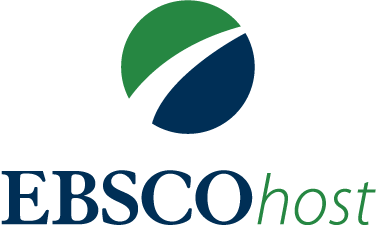De-industrialization in Azerbaijan's Textile Subsectors: Canonical Correlation Analysis and the Dutch Disease Hypothesis
Abstract
Since 2014, academic studies have increasingly underscored the potential adverse consequences associated with Azerbaijan's imbalanced and dependent economic structure. It is widely recognized that countries relying heavily on the export of primary commodities are ill-prepared for situations characterized by sharp declines in international commodity prices. Hence, the objective of this paper is to examine the Azerbaijani economy amidst two parallel developments: the growth of oil-related macroeconomic indicators and the contraction of non-oil subsectoral industrial production. To achieve this, the analytical framework of the Dutch disease, a widely preferred theory to study commodity exporters, and canonical correlation analysis (CCA) were employed in the period 1995 to 2021. The findings reveal statistically significant canonical correlations between certain subsectors of the textile industry (such as ginned cotton, cotton fabric, silk fabric, bed linen of cotton, and cotton yarn) and the Dutch disease variables (e.g., oil rent, real effective exchange rate), while other subsectors (including carpets, crocheted legwear and garments, outerwear, underwear, and footwear) do not exhibit similar patterns. These results show that non-consumer subsectors of the textile subsectors, especially the cotton sector, are more vulnerable to the effects of Dutch disease than consumer subsectors of the textile subsectors. In addition, the oil rent variable is a persistent channel that shows a negative correlation with the latent variables of the textile subsectors. These results prompt policymakers and researchers to reassess the role of large extractive industries in a small, open economy like Azerbaijan and to formulate economic policies that safeguard and foster specific subsectors.
Metrics
References
Andrew, G., Arora, R., Bilmes, J., & Livescu, K. (2013). Deep canonical correlation analysis. In proceedings of International conference on machine learning, PMLR, 28(3), 1247–1255.
Aras, O. N., Suleymanov, E., & Mammadov, K. (2016). Economy of Azerbaijan: 25 years of independence. Sharg-Garb.
Asian Development Bank. (2023). Harnessing the Fourth Industrial Revolution through Skills Development in High-Growth Industries in Central and West Asia—Uzbekistan. Retreived May 20, 2023, from https://www.adb.org/publications/fourth-industrial-revolution-skills-development-uzbekistan
Badeeb, R. A., Lean, H. H., & Clark, J. (2017). The evolution of the natural resource curse thesis: A critical literature survey. Resources Policy, 51, 123–134.
Czech, K. (2018a). Oil dependence of post-Soviet countries in the Caspian Sea Region: The case of Azerbaijan and Kazakhstan. Acta Scientiarum Polonorum. Oeconomia, 17(3), 5–12.
Czech, K. (2018b). Agricultural performance of oil-dependent economies. Roczniki Naukowe SERiA, 20(6), 35–40.
Edmonds, C. N., Cunha, B., Kemp, W., & Lindström, E. (2019). The future of work in textiles, clothing, leather and footwear (Working paper No. 32). International Labour Organization.
Hajiyeva, G. (2018). Carpets becoming more & more popular as Azerbaijan boosts manufacturing. Caspian News. Retreived May 1, 2023, from https://caspiannews.com/news-detail/carpets-becoming-more-more-popular-as-azerbaijan-boosts-manufacturing-2018-7-13-23/
Ibadoghlu, G., Alasgarov, K., & Bayramov, G. (2013). Oil and gas revenue management in Azerbaijan. Policy Paper on Revenue Management in Azerbaijan. Retreived May 1, 2023, from https://papers.ssrn.com/sol3/papers.cfm?abstract_id=3104106
Morcos, A., Raghu, M., & Bengio, S. (2018). Insights on representational similarity in neural networks with canonical correlation. 32nd Conference on Neural Information Processing Systems (NIPS 2018), Montréal, Canada.
Nasibli, I. (2021). Former head of Azerbaijani carpet company misappropriates over $12.7 million. Report News Agency. Retreived May 2, 2023, from https://report.az/en/incident/former-head-of-azerbaijani-carpet-company-misappropriates-over-12-7-million/
Niftiyev, I. (2022). Dutch disease-led de-ındustrialization in the Azerbaijan’s economy: Analysis of the chemicals industry. Doctoral Dissertation. University of Szeged, Szeged, Hungary.
Niftiyev, I. (2022). Textile and chemical subsectors in the Azerbaijani economy: A descriptive glance at possible de-ındustrialization. SSRN Electornic Journal. Retreived May 5, 2023, from https://papers.ssrn.com/sol3/papers.cfm?abstract_id=4035938
Niftiyev, I., & Czech, K. (2020). Dutch disease perspective on vegetable exports in the Azerbaijan economy. Journal of Applied Economic Sciences, 15(4), 813–827.
Rashed, J. S., & Ahmadov, F. S. (2019). Azerbaijan–Bangladesh: Bilateral trade opportunities and potential exporting sector for Azerbaijan. Journal of Contemporary Economic and Business Issues, 6(2), 83–95.
Report News Agency. (2023). The World Bank Group's financial institutions have considered potential areas of collaboration to advance carpet weaving. Retreived May 6, 2023, from https://report.az/en/business/world-bank-group-may-allocate-funds-to-develop-carpet-weaving-in-azerbaijan/
Sadik-Zada, E. R. (2016). Oil abundance and economic growth. vol. 70. Berlin: Logos Verlag GmbH.
Sadik-Zada, E. R., & Gatto, A. (2019a). Determinants of the public debt and the role of the natural resources: A cross-country analysis (Working paper). Retreived May 15, 2023, from https://gala.gre.ac.uk/id/eprint/25219/
Sadik-Zada, E. R., Loewenstein, W., & Hasanli, Y. (2019b). Commodity revenues, agricultural sector and the magnitude of deindustrialization: A novel multisector perspective. Economies, 7(4), 113.
Sadik‐Zada, E. R. (2021). Natural resources, technological progress, and economic modernization. Review of Development Economics, 25(1), 381–404.
Safarova, D. (2019). Azerbaijan boosts carpet making, but at what cost? Eurasianet. Retreived May 5, 2023, from https://eurasianet.org/azerbaijan-boosts-carpet-making-but-at-what-cost
Zhang, H., Wu, Q., Yan, J., Wipf, D., & Yu, P. S. (2021). From canonical correlation analysis to self-supervised graph neural networks. Advances in Neural Information Processing Systems, 34, 76–89.






















